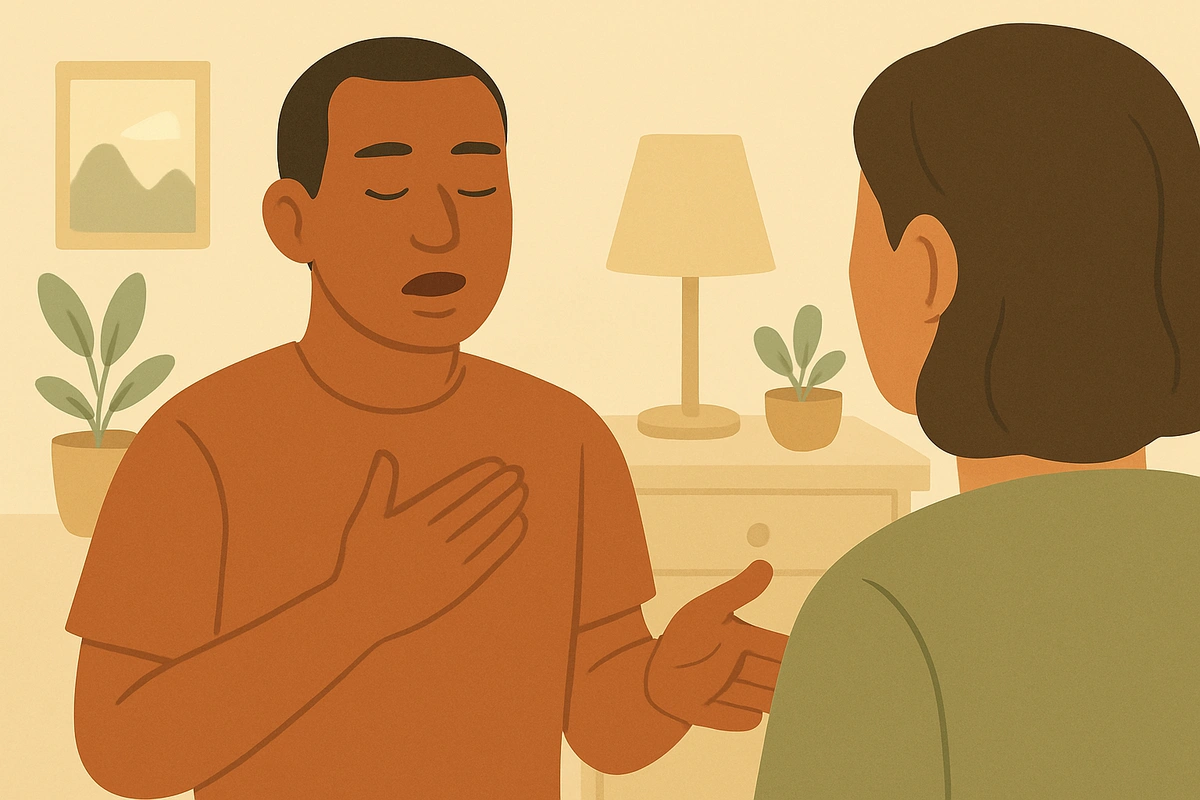Learn to identify and clearly communicate your emotional needs during periods of anxiety to reduce stress, improve relationships, and get the support you need when overwhelmed.

Expressing needs during anxious moments involves learning to recognize your emotional state, identify what specific support would help, and communicating those needs clearly to others using direct, respectful language. This skill transforms anxiety from an isolating experience into an opportunity for meaningful connection and support.
When anxiety strikes, our natural tendency is often to withdraw, minimize our needs, or expect others to somehow know what we need without being told. However, anxiety actually impairs our communication abilities, making it harder to think clearly, listen effectively, and express ourselves. By developing structured approaches to need expression, you can break through anxiety's communication barriers and access the support that's available to you. This practice strengthens relationships while reducing the emotional burden of managing anxiety alone.
Expressing needs during anxious moments works by addressing both the physiological and social aspects of anxiety. When we're anxious, our nervous system activates the "fight-or-flight" response, flooding our bodies with stress hormones like adrenaline and cortisol. This response hijacks our prefrontal cortex - the brain area responsible for clear thinking and communication - making it genuinely harder to express ourselves effectively or listen to others.
Communication serves as a form of "interpersonal emotion regulation," where other people act like an external support system for your brain's emotional processing. Think of it like having a friend help you carry a heavy load - they're lending their emotional strength when yours is temporarily overwhelmed. Research shows that good communication is actually good emotion regulation, helping to stabilize your nervous system through social connection.
When you clearly express needs, you activate what psychologists call "social support," which has powerful effects on reducing stress hormones. Social connection triggers the release of oxytocin (sometimes called the "bonding hormone"), which naturally counters stress hormones and helps activate your parasympathetic nervous system - your body's "rest and digest" mode that promotes healing and calm.
Assertive communication - expressing needs directly and respectfully - also builds self-efficacy, the belief that you can handle challenging situations. This confidence reduces anticipatory anxiety about future stressful events because you know you have effective ways to get support when needed.
"I feel like I'm being a burden when I express needs" - This feeling is common but often inaccurate. Most people appreciate knowing how to help rather than watching someone struggle. Start with people who have explicitly offered support, and remember that healthy relationships involve mutual support during difficult times.
"People don't respond the way I hope when I express needs" - Consider whether you're being specific enough about what you need. "I need support" is harder to respond to than "I need you to listen while I talk through this worry." Also evaluate whether you're approaching people who have the emotional availability to help.
"I don't know what I need when I'm anxious" - Develop a standard "needs menu" when you're calm. Common options include listening, reassurance, physical comfort, practical help, distraction, or simply having someone nearby. During anxiety, you can choose from your pre-made list rather than creating options from scratch.
"My anxiety makes it hard to speak clearly" - Practice the pause-and-breathe technique more extensively. Take longer to calm your nervous system before attempting communication. You can also say, "I'm feeling too anxious to explain this clearly right now, but I need support."
"I worry about saying the wrong thing and making it worse" - Remember that imperfect communication is better than no communication when you need support. Most people can work with unclear requests better than they can guess what you need. You can always clarify or adjust your request as the conversation progresses.
"People seem uncomfortable when I express emotional needs" - Some people haven't learned how to respond to emotional expression. This often says more about their comfort level than about the appropriateness of your needs. Consider building relationships with people who are more emotionally available while still maintaining other relationships.